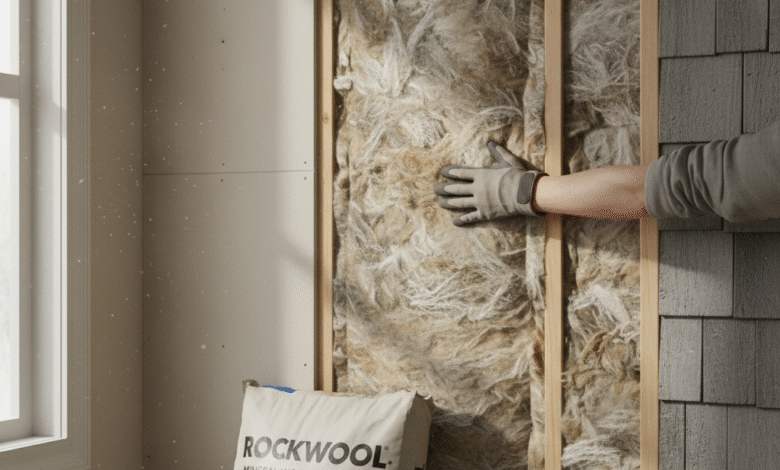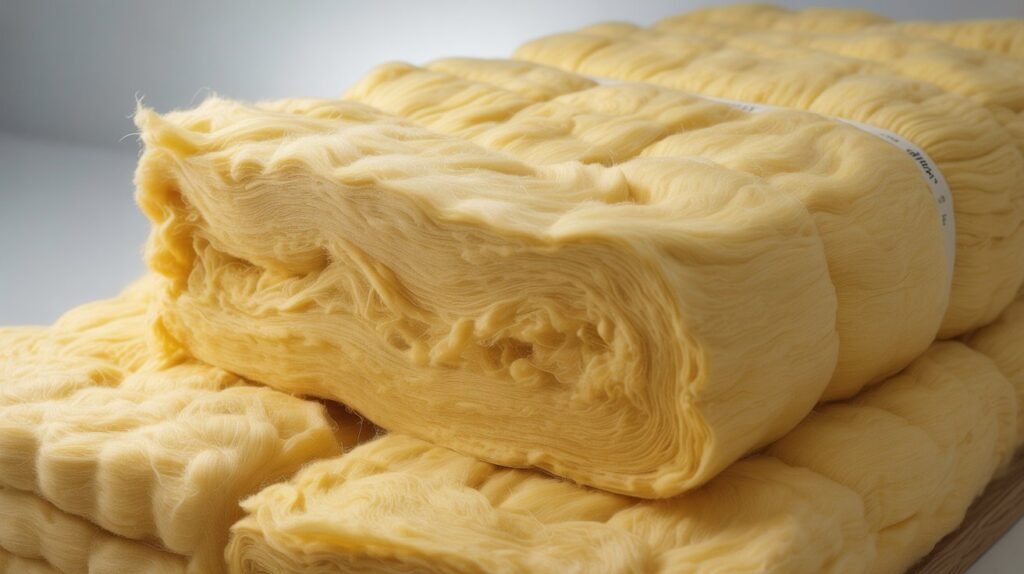
Mineral Wool Insulation: My Real-Life Home Upgrade Diary
Introduction
So, a couple of weekends ago I found myself knee-deep in dust, fibers, and the weird satisfaction of ticking off one more home-improvement task. I’ve been meaning to upgrade the insulation in our home’s attic and walls, and after a fair bit of research I landed on mineral wool insulation (that’s the focus keyword right there). I want to share what I learned: the good things, the “oh-that’s annoying” things, and what you should know before you buy, especially if you’re in the U.S.
Why did I pick mineral wool insulation? Honestly, because I got a little tired of hearing the HVAC unit kick on every evening and wondering “what the heck is all that warm air doing?” I wanted something better than the fiberglass batts we had, something a little more “premium” (for a DIYer like me) and that felt like it would last. The more I dug, the more I realised mineral wool has some serious perks—and yes, some things to consider too.
So buckle up. We’re going through what mineral wool insulation is, why you might want it, how I installed it (sort of), some mistakes I made, and whether it really lives up to the hype. I’ll pepper in stories because hey, this is a diary-style blog after all.

What is Mineral Wool Insulation?
Let’s clear the air. If you haven’t heard of it (or you have but only vaguely), here’s the gist.
Mineral wool is a fibrous insulation material made from molten rock or slag, spun into fibers. Websites explaining the basics highlight that it is a thermal insulation solution, has noise-reduction and sound-absorption properties, is durable and typically non-combustible. Rockwool+1 For example, one manufacturer says their mineral wool batts are made of inorganic fibers derived from basalt, a volcanic rock. Johns Manville
In less jargon-heavy terms: imagine you’re taking rock (or other minerals), heating it up until it melts, then spinning it into fine fibers (kind of like cotton candy, but rock) and then turning that “wool” into slabs, rolls, batts, etc. Wikipedia+1
Key Properties (that matter)
-
Thermal resistance: It helps keep heat in (or out) by resisting heat flow.
-
Fire resistance: Because it’s made of rock/minerals, it doesn’t burn the way some other insulation might. According to one source, stone wool can withstand fire temperatures in excess of 1000°C. Rockwool
-
Sound absorption: Yep, it’s not just about heat. One manufacturer says their mineral wool helps with sound and fire block between floors/walls. Johns Manville
-
Moisture/rot resistance: Because it’s inorganic (not wood fibers, not cellulose), it doesn’t foster mold or rot the way organic materials might. Rockwool+1
My “aha” moment
I had this moment when I realized: the old fiberglass batts in my attic were thin, sagging, dusty, and probably not doing much. I climbed up with a flashlight, poked around, and thought: “If I had a magic wand I’d replace all this with something better.” Enter mineral wool. When I saw how dense it looked, how it fit snug in between joists, and how it seemed to “fill the space” more completely, I was sold.
Why Consider Mineral Wool Insulation — Real-World Benefits
Now let’s talk benefits, but with a “real life” spin.
Keeps the house comfortable (and maybe your bills a bit lower)
Here in the U.S., depending on your climate zone, insulation matters big time. In winter if heat’s escaping, your furnace works harder; in summer if hot air’s coming in, your AC is draining money. Mineral wool’s thermal resistance means you’ve got a better shot at keeping the temperature stable. The more stable indoors = more comfort = fewer “ughh why is the room cold/hot again?” moments.
Sweet bonus: sound reduction
My house has a two-story part and I could always hear the upstairs TV from downstairs when I wasn’t in the mood for it. After installing mineral wool in the floor cavity between stories, I noticed less noise leakage. Plus, one product line of mineral wool says it improves wall assembly STC (sound transmission class) ratings by up to 10 dB. Johns Manville If you’re like me and value your Netflix-and-chill quiet time, that’s a win.
Fire safety perks
Listen — we hope we’ll never need the fire safety part, but if something goes wrong, it’s nice to have. Since mineral wool is non-combustible and resists very high temperatures (one product’s melting point is above 2000°F / ~1093°C). Johns Manville+1 Having that “extra margin” feels good.
Damp / mold resistance
Having lived in humid spots and dealt with “is that a leak?” or “why is the drywall peeling?” questions, any material that doesn’t encourage mold gets a thumbs up from me. Mineral wool is inorganic, so no nutrients for mold or rot. Rockwool+1
Longevity
Because it resists moisture, sagging and decay, it tends to “stay put” longer than cheap batts that might settle or compress. So from a long-term perspective, you might feel like you got your money’s worth.
My DIY Experience & What I Learned
Ok, now for the hands-on part — the mistakes, the quirks, the “don’t do what I did” moments.
Pre-work: measuring, prepping
Before I bought anything, I measured everything: wall cavities, joist spacing, attic height, obstructions (pipes, wires, ducts). One mistake: I didn’t account for some weird angled rafter bays. Next time I’ll mark them clearly.
Also – I made sure the existing insulation was cleaned up a bit. Old insulation can be dusty, uncertain, maybe compromised. I pulled out some flaps of old batts, vacuumed some debris, made sure there weren’t leaks or pests. I recommend doing that because mineral wool fits better when the cavity is clean.
Installation: yes, the real deal
Putting in the mineral wool batts was more “tactile” than I expected. They’re denser and a little harder to shove into awkward spaces, but that’s kind of good — they stay more firmly in place and don’t sag as fast. The instructions (I followed the manufacturer’s) say cut neat to size, fit snugly, but don’t compress the batt (that would reduce its R-value).
Here’s a note: wear protective gear. Gloves, goggles, and a mask. Even though mineral wool is better than older options in many ways, it’s still fibers and dust gets into the air when you cut it. I had a faint scratchy throat the first night — nothing terrible, but an indicator. I remembered a Reddit thread: > “Mineral wool is great. Fire retardant, awesome noise absorption, non toxic. You can’t count on it as your air sealing detail though.” Reddit That last part (“air sealing”) is key — insulation isn’t everything; sealing matters too.
Mistake #1 – ignoring air leaks
Even with good insulation, if you’ve got major air leaks (around windows, ducts, soffits, attic access), you’re losing potential. I realized I should’ve sealed several gaps before installing the mineral wool. Ended up doing some caulking / foam filler afterwards. Better to do it first.
Mistake #2 – cutting corners on thickness
I had bought “standard thickness” batts, thinking “eh, that’s good enough”. But after chatting with a contractor friend I realized I could’ve gone thicker for fewer joists and a lower heating bill. If you can budget for the upgrade, maybe choose the higher R-value version of mineral wool.
Mistake #3 – forgetting the dust & cleanup
Post-install, I found fibers floating in the attic space, dust on the floor, and I didn’t vacuum them all up. Later I found some on the HVAC filter. So — cleanup matters. I used a good vacuum, wiped surfaces, changed the filter. Just be ready for a messy afternoon.
What I got out of it
After a few weeks: I noticed the house felt “cozier”. When the furnace kicked on I didn’t feel like the air was escaping right away. The room temperatures held steadier. I even noticed less echo / less sound transfer upstairs/downstairs. And, well, I had fewer “why is my heating bill so high?” moments (though I have to check actual numbers this winter to see full effect). Overall: satisfied.
Installing Mineral Wool Insulation – How to Choose & What to Ask
If you’re in the U.S. and considering mineral wool insulation, here are some things to keep in mind before you buy or call in a pro.
Choosing the Right R-Value
R-value means resistance to heat flow. The higher the number, the better (generally). Manufacturers of mineral wool list R-values; one example: R-4.3 per inch for a particular product line. Johns Manville In the U.S., depending on climate zone (I’m in a mid-zone), you might want R-30 or more for an attic, R-13-15 for typical 2×4 wall cavities. If you’ve got 2×6 walls, you might go R-19 or R-21, etc.
Density and fire rating
Denser mineral wool = better sound and fire performance. One brand lists “melting point in excess of 2000°F (1093°C) … Flame Spread of 0 and Smoke Developed of 0.” Johns Manville If your home has fire code concerns (attached garage, certain local rules), this might matter.
Moisture / vapor concerns
Mineral wool is moisture resistant, but that doesn’t mean your job is done. Make sure you’ve got proper vapor barriers (if required in your climate), proper attic ventilation, no water leaks. The insulation can do a lot but it won’t replace proper building envelope maintenance.
Read the product specs & installation instructions
One of the sources notes: while stone wool and glass wool (two types of mineral wool) are typically non-combustible, their fire resistance differs. Stone wool can handle much higher temps. Rockwool Also, check for manufacturer instructions about cutting, fitting, and whether you need facings or not.
Air sealing + insulation combo
As I learned the hard way, insulation without air sealing is like a bucket with holes. Before/while installing mineral wool, check for penetrations (wires, pipes, chimneys, attic access), seal them with foam, caulk or other appropriate products. Then install your insulation. You’ll get better performance.
DIY vs hiring a pro
If you’re handy (and you were up for my weekend thick of it), DIY is realistic. But if your attic is cramped, has hazards (old wiring, asbestos, rodents), it might be worth the pro. They’ll know code, vapor barrier, ventilation etc.
Potential Drawbacks & Things to Watch
Nothing’s perfect—and mineral wool insulation does have some caveats.
-
Cost: It tends to cost more than basic fiberglass batts. So your upfront investment is higher.
-
Install effort: Because it’s denser and stiff, it might require more effort to cut and fit than light batts.
-
Air sealing still required: As mentioned — you still need to address leaks. Many online voices note that insulation alone isn’t sufficient. Reddit
-
Dust & handling: While safer than some older insulation, you still want protection when cutting/installing.
-
Settling/voids: If improperly installed (gaps, compression, missing pieces) you’ll lose performance. Always fit batts snugly, avoid compressing them.
-
R-value misconceptions: Just plugging insulation in doesn’t guarantee R-value; real-world performance depends on how well it’s installed and sealed.
FAQs — Your Questions Answered
Here are some of the common questions I ran into (and maybe you are too):
Q1: Is mineral wool insulation safe for my home?
Yes — in general, newer mineral wool products are considered safe for residential use. They’re inorganic (not wood or natural fiber) so don’t promote mold or rot. They have very good fire resistance and sound performance. Just follow the manufacturer’s guidelines for installation, wear protective gear when installing, and make sure the space is ventilated during work.
Q2: How does mineral wool compare to fiberglass insulation (or foam boards)?
Mineral wool tends to be denser, better at fire and sound resistance, and more stable over time (less sagging or settling). For example, one product line notes R-4.3 per inch and fire rating “melting point above 2000°F.” Johns Manville Fiberglass is cheaper, easier to install perhaps, but may not perform as well in fire/sound/resistance contexts. Foam boards (rigid) are different altogether—good for specific uses (walls, exterior insulation) but different form factor. Pick based on your need, budget and performance goals.
Q3: Do I need to remove old insulation before installing mineral wool?
Not always, but you should assess the existing insulation. If it’s saturated, moldy, heavily damaged, or very under-performing, yes — remove it. If it’s just “old but dry and intact” you might layer (check local code and manufacturer guidelines). In my case I removed some old batts that looked crunchy, dusty, and sagging.
Q4: Will installing mineral wool really reduce my heating/cooling bills?
Possibly. If your current insulation is weak, has gaps, or your home leaks air like crazy, upgrading to quality insulation + air sealing can reduce energy loss. That being said: insulation isn’t a miracle. Your HVAC system, windows, doors, roof, attic ventilation, air sealing—they all matter. In my case I feel the difference. I’ll know more when the winter bill comes.
Final Thoughts / Conclusion
Alright — here’s my verdict, in the tone of one home-improver to another: if you’re considering mineral wool insulation for your U.S. home, it’s absolutely worth strongly considering. Yes, the cost is a bit higher than the cheapest options, and yes you’ll want to prep, measure, seal, and install carefully. But the upside—better comfort, fire resistance, sound reduction, and durability—makes it a very solid choice.
I learned that the difference between “just install insulation” and “do it properly” is huge. Measuring well, air sealing, choosing the right thickness/R-value, fitting batts snugly—all of it matters. And I’m glad I did the work (even if my Saturday was spent covered in fibers and swearing at tricky joist bays).
If you’re in a climate where you care about heating and cooling, if you’ve got noise issues, or if you’re in the mood for a home upgrade that delivers on more than just “warm-or-cool”, then go for mineral wool. Just treat it as more than a weekend gig — prep well, gear up, and plan ahead.
Thanks for reading my little home improvement diary. If you end up installing mineral wool insulation, I’d love to hear how it goes. Drop a comment or message, tell me your quirks, your attic head-room woes, your HVAC bill surprise. Happy insulating!
Stay cozy, stay smart, and here’s to less wasted air and fewer “why is it so hot/cold again?” moments.




